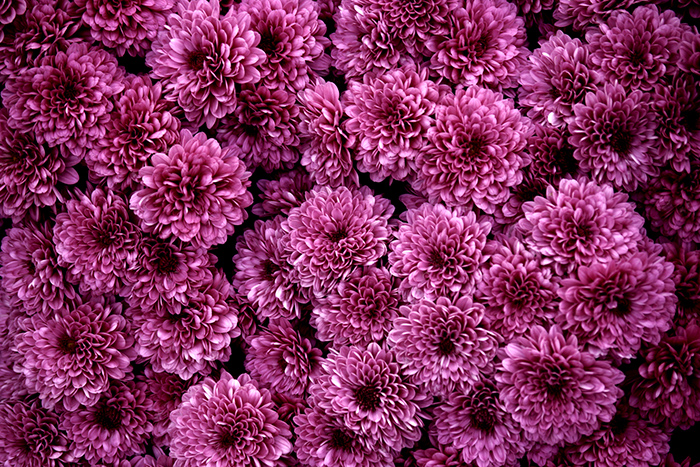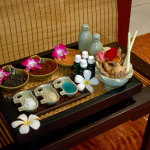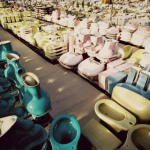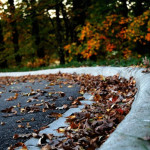Are you one of those gardeners who only likes to grow things that you can eat? Well, incorporating Fuschia Flowers into your garden adds color and texture to your gardening environment, and you might be surprised to know that the Fuchsia flower is edible.
Yes, Fuschia Flowers Are Edible
Not only can you eat the blossoms, you can also eat the berries. If you felt guilty about taking up garden space with blooming plants, these lovely flowers might be the solution that you need.
While all of the fuchsia flowers are edible, there is a range of different tastes and textures. Some people say that the flowers and leaves have a mild flavor that reminds them of licorice or anise. The berries can range from almost tasteless to slightly sweet to leaving a somewhat bitter aftertaste. It is a good idea to either do some careful research or plant a variety of different flowers to make sure you grow some that you like and can use in a variety of different applications.
Also, while you can use these plants to make dishes more interesting and colorful, it is unlikely that you would consider them a staple food. That means you will want to incorporate Fuchsia Flowers into your garden with other edible plants.
Uses For Fuchsia Berries
These berries are very versatile, and they can get made into a wide range of different jellies and jams. Some people even use them to make pie filling and berry wine.
Uses For Fuchsia Flowers
The inside of the flower is milder, and the petals tend to be a bit more bitter, so use them sparingly. The most obvious use for these flowers is as a colorful and distinctive salad garnish. However, some creative cooks even dip the buds into batter and fry them up into flower fritters.
To use them as cake decorations, dip the petals or whole flowers into egg white, the dip them into sugar, and let them dry. Now you can have cake flower decorations that are actually made out of flowers.
Using Fuchsia Flowers In Your Habitat Garden
Of course, you will need to grow these flowers before you can begin creating all sorts of marvelous new dishes out of them. But you may also want another word of encouragements before you begin, and that word is “BEES!”
Many of you may have heard the sad news that the bee population has been reduced, and most gardens can benefit from the presence of these important pollinators. Besides being edible for humans, the nectar and pollen of these plants attract bees. They may also attract graceful little hummingbirds. So, you are making a great choice if you want your garden to also help the natural environment.
You might also be interested in learning about something called habitat gardening. This is the practice of cultivating certain types of flowers and other plants that naturally attract beneficial animals. It is obvious that bees help pollinate a great portion of our food supply. Additionally, hummingbirds also eat other insects that might be garden pests.
Incorporating Fuchsia Flowers Into Your Garden
These are some of the highlights of growing Fuchsia:
- These flowers will get lush in very rich soil.
- If you have to plant them in full sun, make sure that the dirt stays moist but not too wet.
- With the right conditions, these flowers may naturally spread to other parts of your property.
OK, now let’s get to the important considerations to successfully grow these plants in your garden. The first thing that you should know is that these plants are pretty heavy feeders. That means that the more you fertilize, the more you will grow full and lush plants. If you do not care to use chemical fertilizer on plants that you might eat, it is a good idea to begin a compost pile before you start growing your flowers.
A compost pile does not have to be fancy. Simply find a spot where you can mix existing dirt with household and lawn scraps. You can save eggshells, rinds, and other organic material and just keep adding it into the mix. Coffee grounds and banana peels are other types of waste that you should not throw away. Once all of this delicious garbage has rotted away, you will be left with some very rich soil to begin planting.
Also, experts say that these flowers prefer some shade during the day, so don’t plant them in full sun if you can avoid it. However, it is a misconception to believe that these flowers cannot grow in full sun. The thing that they don’t like is having their roots dry out, and they aren’t drought resistant at all. If you do decide to plant Fuchsia Flowers in the sun, you just have to take extra care to make sure that the roots don’t dry out.
Keep the roots damp, but don’t drown the flowers. This may take some careful attention until you can measure the right amount of water to use with your own particular type of soil. Some people say that these flowers are perfect for container gardening because containers make it much easier to control different aspects of gardening.
For example, it is easier to control the mix of the soil to ensure it is rich with nutrients. It is also much easier to make sure that the soil stays moist, and a container with good drainage should keep the roots from getting too wet or even drowning.
Since these plants are also a favorite with bees and hummingbirds, you may find that your tidy little flower bed starts germinating new flowers in surprisingly places. Most gardeners consider this a bonus as the flowers are very pretty and useful.
Incorporate Fuchsia Flowers Into Your Home Garden
These useful flowers are beautiful and even edible. They are also a good way to attract beneficial wildlife to your garden. Also, fuchsia is not that hard to grow!






